Commercial Property Prices Extend Growth Streak In 2017 Despite Slowdown In Sales Volume
CCRSI RELEASE – JANUARY 2018
(With data through DECEMBER 2017)
Print Release (PDF)
Complete CCRSI data set accompanying this release
This month's CoStar Commercial Repeat Sale Indices (CCRSI) provides the market's first look at commercial real estate pricing trends through December 2017. Based on 1,078 repeat sale pairs in December 2017 and more than 187,000 repeat sales since 1996, the CCRSI offers the broadest measure of commercial real estate repeat sales activity.
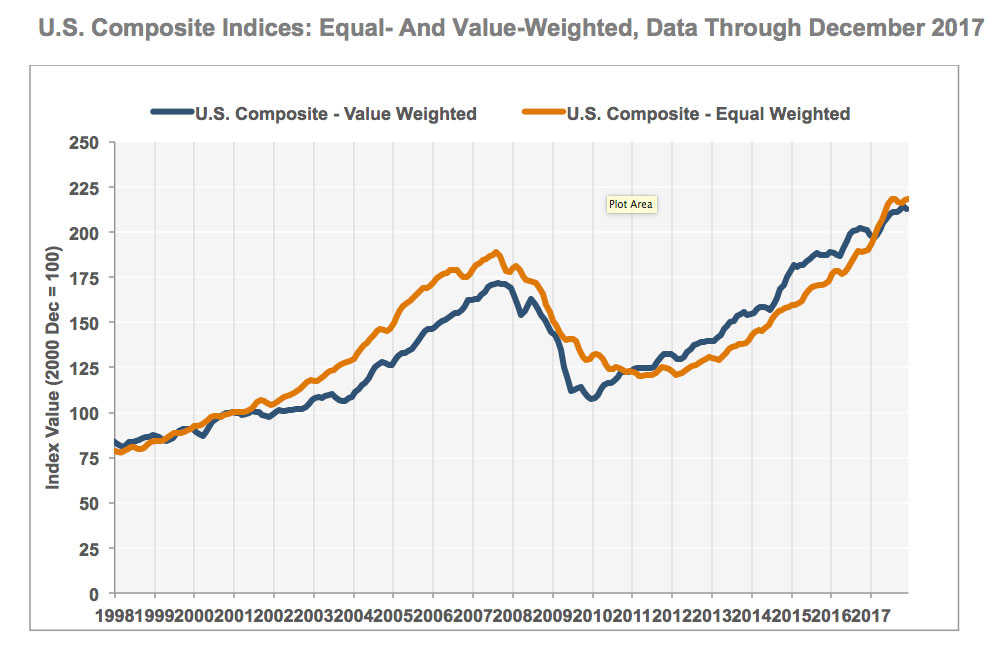

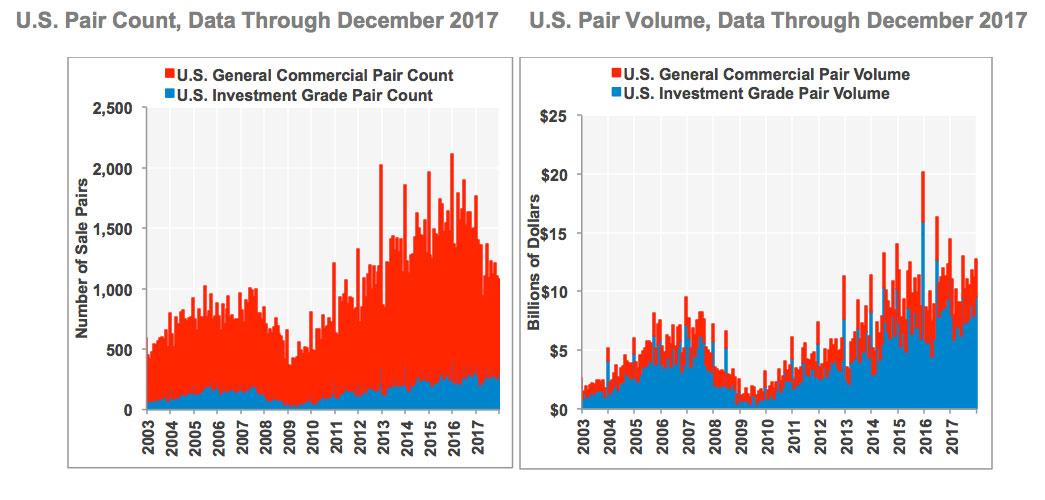
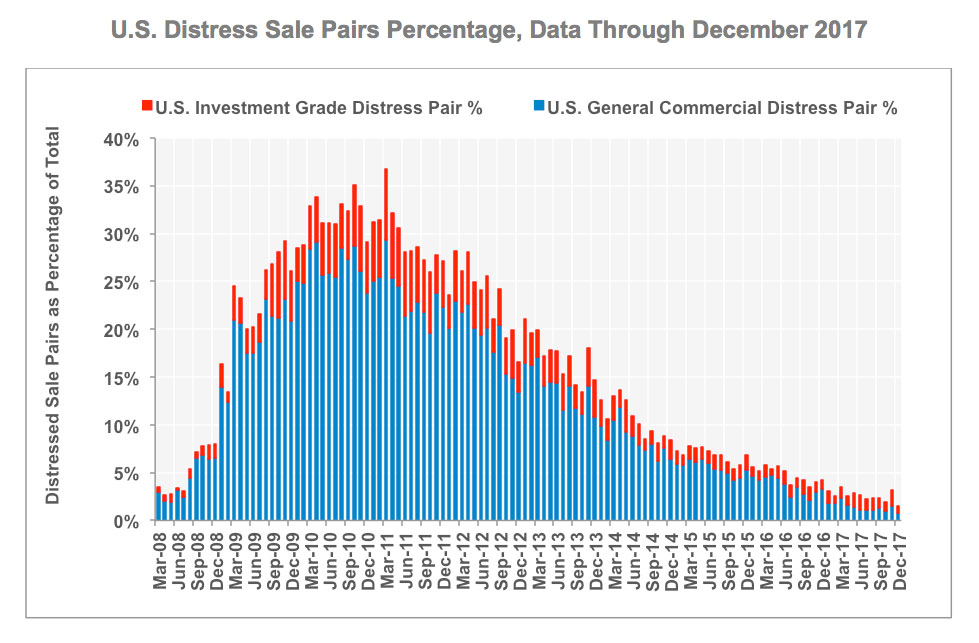
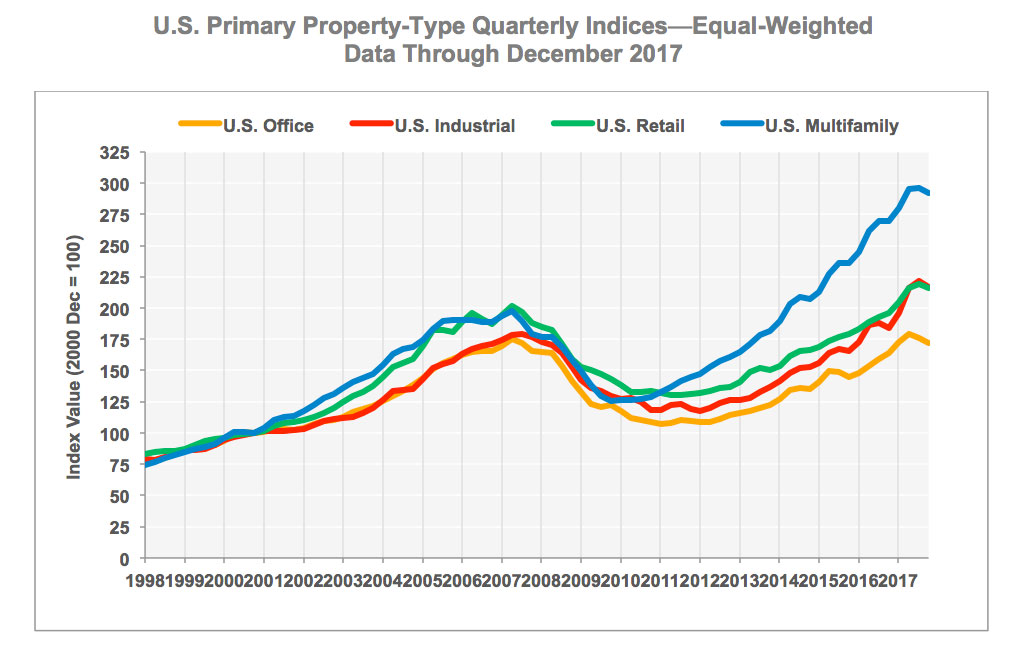
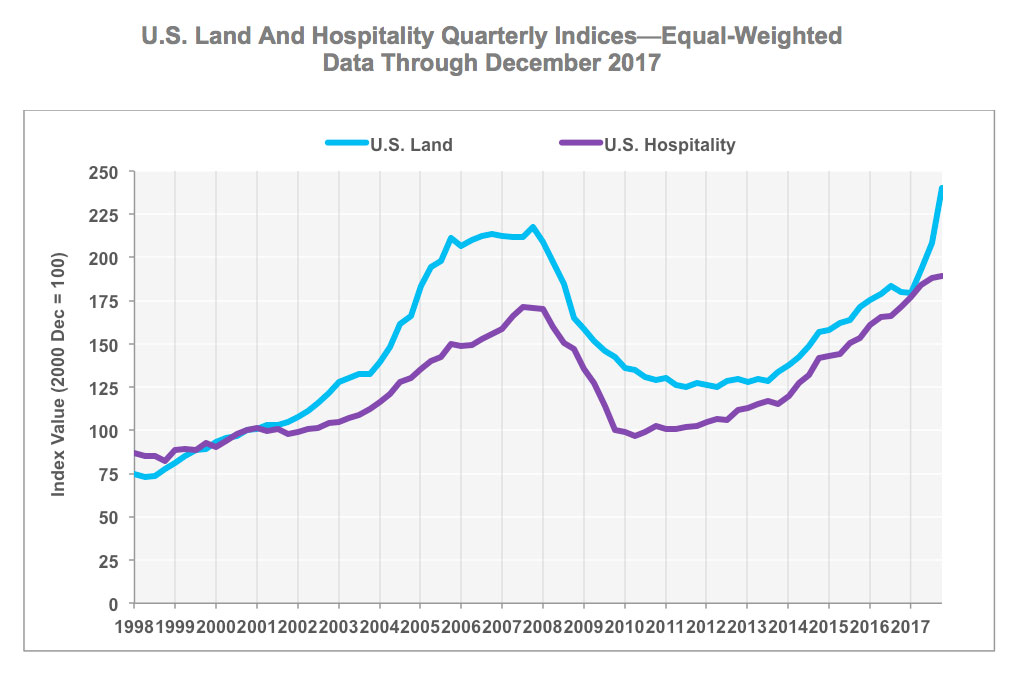
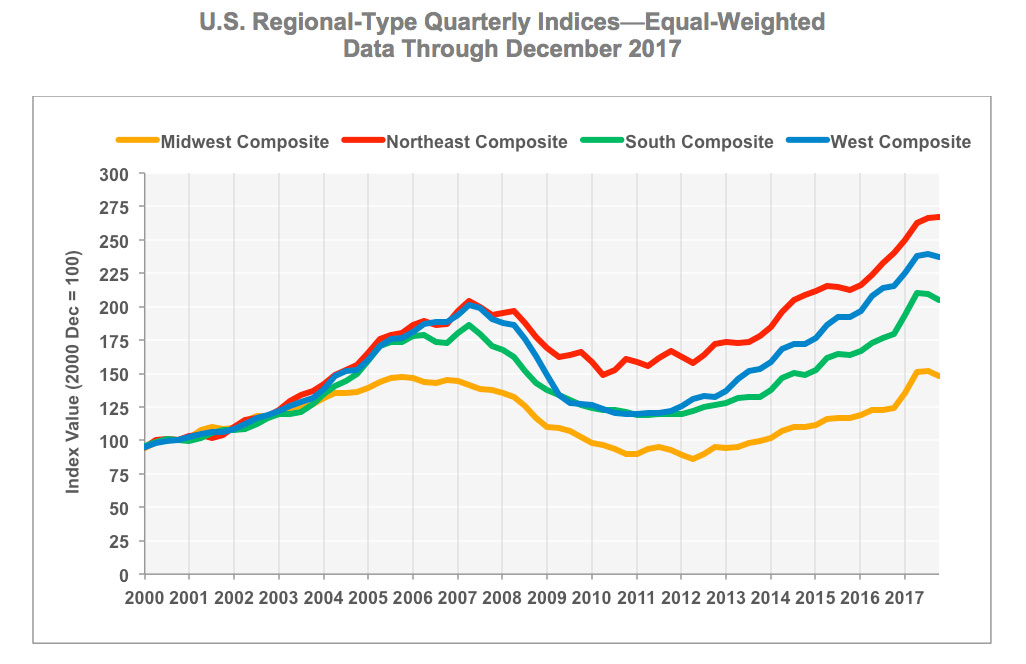

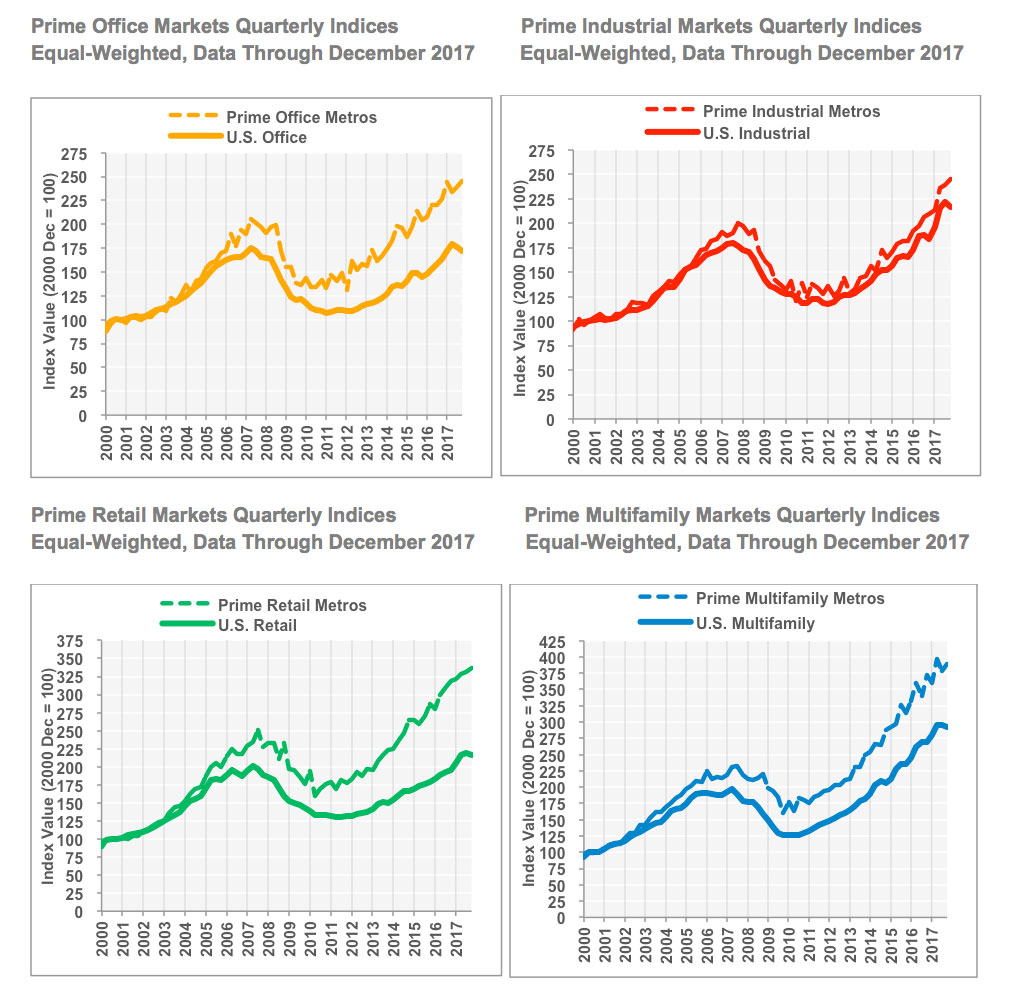
CCRSI National Results Highlights
-
COSTAR COMPOSITE PRICE INDICES EXTENDED GROWTH STREAK IN 2017. Healthy economic growth throughout the year coupled with steady absorption of commercial space and favorable interest rates, buoyed composite price growth in 2017. The equal-weighted U.S. Composite Index extended its streak of stronger growth with a 14.7% increase for the full year of 2017 as the scope of the pricing recovery broadened across the property size and quality spectrum. Meanwhile the value-weighted U.S. Composite Index also rose 5.7% in 2017.
-
INDUSTRIAL INDEX GROWTH SURGED IN 2017 WHILE PRICING GROWTH FOR MULTIFAMILY AND OFFICE SLOWED. All six major commercial property-type indices, including the land and hospitality indices, posted positive gains in 2017, marking the sixth consecutive year of pricing recovery with positive gains across the spectrum. The Industrial index advanced 17.7% in 2017, well ahead of the pace of 9.9% set by the index in the previous two years. The Prime Multifamily Metros Index also increased by a slower 4.2% in 2017, suggesting weaker growth in high-value apartment properties located in primary markets.
-
LAGGARD MIDWEST REGIONAL INDEX REGAINED PRERECESSION PEAK. Lacking a concentration of core markets, the Midwest Index lagged behind the other regional indices throughout the current cycle. However, as the breadth of the recovery extended across more markets and property types, the Midwest Index advanced 19% in 2017, finally surpassing its prerecession peak level set in 2006. By comparison, the Northeast, West and South regional indices, which had already fully recovered their previous highs, grew 11%, 10%, and 13.7%, respectively, in 2017.
-
TRANSACTION VOLUME SLOWED MODESTLY FROM PREVIOUS TWO YEARS.
Composite pair volume of $128.1 billion in 2017 was down 3% from the peak composite pair volume pace set in 2015–2016. However, 2017’s composite pair volume was still the third-highest annual total on record for the CCRSI. The slowing sales volume was felt across the CRE quality spectrum. Composite pair volume in 2017 was down 1.3% in the Investment Grade segment and 6.9% in the General Commercial segment, from 2015–2016 levels.
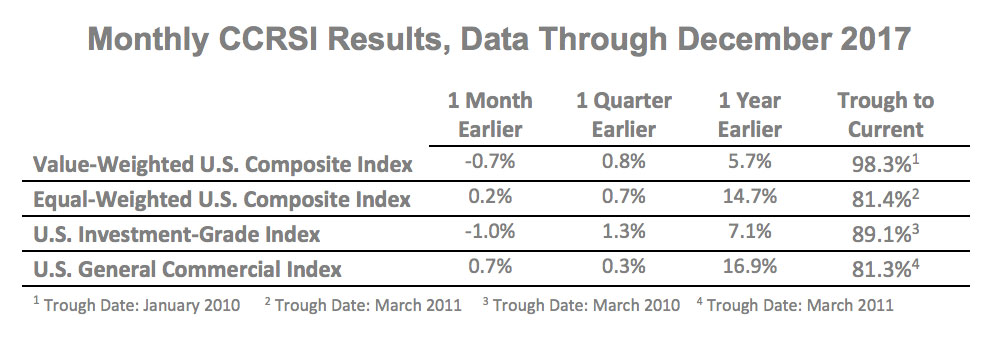
Quarterly CCRSI Property-Type Results
-
ALL MAJOR PROPERTY SECTORS POSTED GAINS IN 2017. Although the rate of growth decelerated in some property segments, all six property-type indices ended the year on a positive note. The prime markets indices within each property sector—dominated by the large, core, coastal metros—generally increased more slowly than the national property-type indices in 2017 as the pricing recovery has become more broad-based.
-
U.S. INDUSTRIAL INDEX LED ALL OTHER MAJOR PROPERTY-TYPE INDICES. Industrial fundamentals remained healthy as vacancy hit the lowest point in the cycle in 2017 despite this also being a year for record construction of new warehouse and distribution space. The U.S. Industrial index advanced 17.7% in 2017, well above its 9.9% average annual pace set in 2015–2016. Core markets remained in favor as the Prime Industrial Metros Index advanced by 16.6% in 2017.
-
MULTIFAMILY INDEX GAINED 8.5% IN 2017. Rising levels of supply and already-high pricing contributed to slower price growth in the multifamily sector in 2017. The U.S. Multifamily index was up by 8.5% in 2017, still a solid pace of growth, although it marked a slowdown from the previous above-average pace of 14.1% set in 2015–2016. Meanwhile, the Prime Multifamily Metros Index was up by a slower 4.2% in 2017, suggesting weaker growth in high-value properties in primary markets.
-
DESPITE HEADWINDS FROM RECENT WAVE OF STORE CLOSURES, U.S. RETAIL INDEX POSTED MODERATE PRICING GAINS IN 2017. While retail closures have taken a bite out of comparable store sales, retailers are disproportionately targeting less-productive locations for closure, while demand for strong locations remained robust. As a result, the U.S. Retail Index rose 10% in 2017. The Prime Retail Metros Index advanced by 5.9% in the same period.
Quarterly CCRSI Property-Type Results (cont.)
-
OFFICE INDEX GROWTH DECELERATED IN 2017. The U.S. Office Index increased 5% in 2017 as office rent levels and occupancy rates nationally continued to hold steady. However, the 2017 price growth is significantly lower than the average of 10.2% in 2015–2016. Price growth was slightly higher at the top end of the market, however, as the Prime Office Metros Index advanced by 8.4% in 2017.
-
U.S. HOSPITALITY CONTINUED TO POST STEADY PRICING GROWTH. The U.S. Hospitality Index was up 10.3% in 2017, on pace with average annual gains of 10% in 2015–2016. Nationally, hotel occupancies remain elevated, which has supported continued room rate and RevPAR growth as well as investor demand.
-
U.S. LAND INDEX MADE SIGNIFICANT GAINS IN 2017. Strong fourth quarter 2017 gains pushed the Land Index up by 33.7% in 2017. Demand for development sites has propelled growth in the Land Index this cycle. However, that growth has been volatile. The Land Index did not reach its trough until very late in the cycle in 2012 and did not regain its prerecession peak until 2017.
Quarterly CCRSI Regional Results
-
MIDWEST REGIONAL INDEX REGAINED PRERECESSION PEAK IN 2017. Lacking a concentration of core markets, the Midwest Index lagged behind the other regional indices throughout the last cycle. However, as the breadth of the recovery extended across more markets and property types, the Midwest Composite Index advanced 19% in 2017, finally surpassing its prerecession peak level set in 2006. The Midwest Office Index was the best performer in the region, expanding by 22.3% in 2017.
-
SOUTH REGIONAL INDEX ADVANCED 13.7% IN 2017. While the Northeast and West regional indices have a higher concentration of the core coastal markets that helped propel stronger price growth earlier in the recovery, the South’s favorable demographics and more affordable pricing has recently provided the region with stronger momentum in price growth as the cycle has progressed. The South Industrial Index led pricing growth in the South, expanding 20.8% in 2017.
-
NORTHEAST REGIONAL INDEX GROWTH MODERATES. The Northeast’s strong concentration of top-tier markets, including Boston, New York City and Philadelphia, have been a magnet for investment since early in the current cycle and helped push all four regional indices past prior peak levels to new historical highs. The Northeast Composite Index maintained an 11% growth rate in 2017, a modest deceleration from its 13% growth rate in 2016. The Northeast Industrial Index was the best performer in the region, expanding by 15.5% in 2017, while the Northeast Office Index had the slowest growth in the last year, expanding by just 1.7% in 2017.
-
WEST INDUSTRIAL INDEX BOOSTED GROWTH IN THE REGION. The West Composite Index advanced 10% in 2017. The West Industrial Index was the engine of growth in the region, expanding by 14.3% in 2017, the only property-type index in the region to reach a double-digit pace of growth in 2017.
About The CoStar Commercial Repeat-Sale Indices
The CoStar Commercial Repeat-Sale Indices (CCRSI) is the most comprehensive and accurate measure of commercial real estate prices in the United States. In addition to the national Composite Index (presented in both equal-weighted and value-weighted versions), national Investment-Grade Index, and national General Commercial Index, which we report monthly, we report quarterly on 30 sub-indices in the CoStar index family. The sub-indices include breakdowns by property sector (office, industrial, retail, multifamily, hospitality, and land), by region of the country (Northeast, South, Midwest, and West), by transaction size and quality (general commercial, investment-grade), and by market size (composite index of the prime market areas in the country).
The CoStar indices are constructed using a repeat sales methodology, widely considered the most accurate measure of price changes for real estate. This methodology measures the movement in the prices of commercial properties by collecting data on actual transaction prices. When a property is sold more than once, a sales pair is created. The prices from the first and second sales are then used to calculate price movement for the property. The aggregated price changes from all of the sales pairs are used to create a price index.
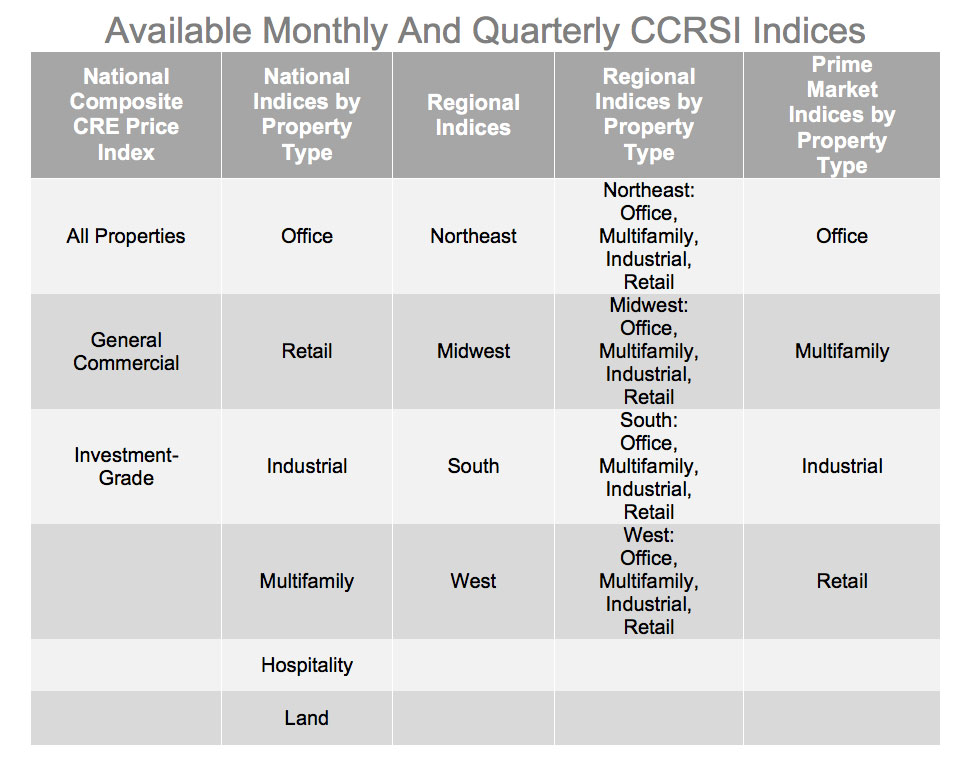
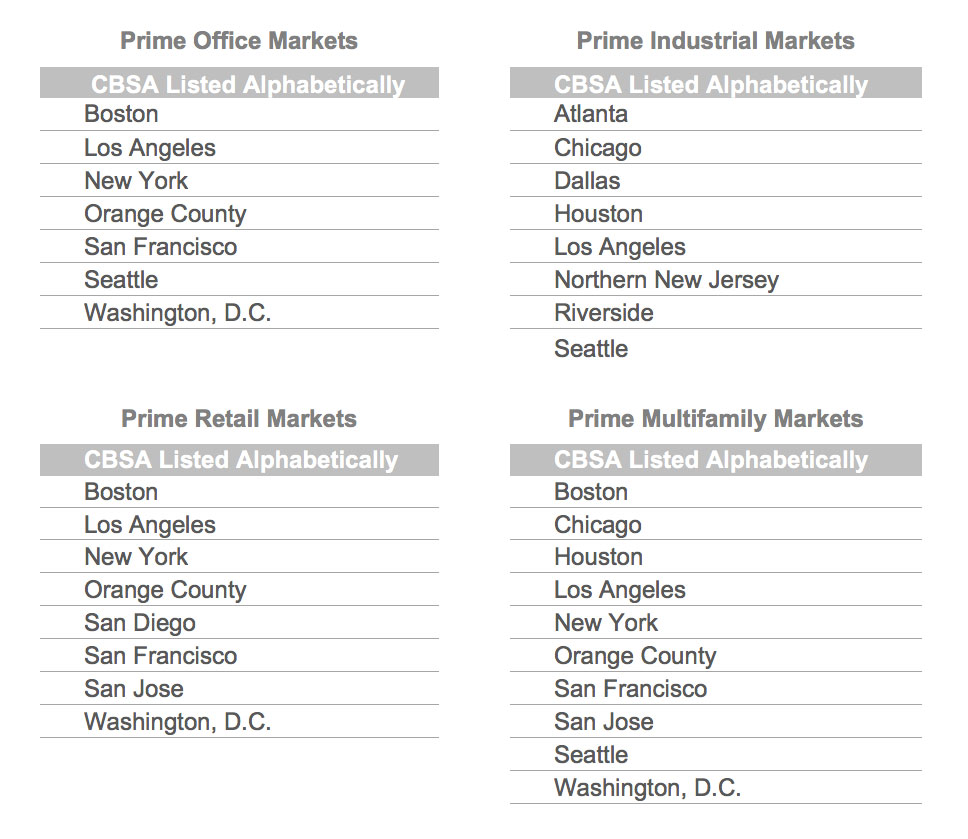
Media Contact:
Gay Beach, Senior Director, Marketing Communications, CoStar Group (gbeach@costar.com).
For more information about the CCRSI Indices, including the full accompanying data set and research methodology, legal notices and disclaimer, please visit http://www.costargroup.com/costar-news/ccrsi.
About CoStar Group, Inc.
CoStar Group, Inc. (NASDAQ: CSGP) is the leading provider of commercial real estate information, analytics and online marketplaces. Founded in 1987, CoStar conducts expansive, ongoing research to produce and maintain the largest and most comprehensive database of commercial real estate information. Our suite of online services enables clients to analyze, interpret and gain unmatched insight on commercial property values, market conditions and current availabilities. LoopNet is the most heavily trafficked commercial real estate marketplace online with over 5 million unique monthly visitors. Apartments.com, Apartment Finder.com, ApartmentHomeLiving.com, Westside Rentals and Apartamentos.com form the premier online apartment resource for renters seeking great apartment homes and provide property managers and owners a proven platform for marketing their properties. CoStar Group’s websites attracted an average of approximately 37 million unique monthly visitors in aggregate in the third quarter of 2017. Headquartered in Washington, DC, CoStar maintains offices throughout the U.S. and in Europe and Canada with a staff of over 3,600 worldwide, including the industry’s largest professional research organization. For more information, visit www.costargroup.com.
This news release includes "forward-looking statements" including, without limitation, statements regarding CoStar's expectations, beliefs, intentions or strategies regarding the future. These statements are based upon current beliefs and are subject to many risks and uncertainties that could cause actual results to differ materially from these statements, including the risk that the trends represented or implied by the indices will not continue or produce the results suggested by such trends, including trends related to commercial real estate fundamentals, transaction volume, price growth, and demand. More information about potential factors that could cause results to differ materially from those anticipated in the forward-looking statements include, but are not limited to, those stated in CoStar’s filings from time to time with the Securities and Exchange Commission, including in CoStar’s Annual Report on Form 10-K for the year ended December 31, 2016, and CoStar’s Quarterly Report on Form 10-Q for the quarter ended September 30, 2017, each of which is filed with the SEC, including in the “Risk Factors” section of those filings, as well as CoStar’s other filings with the SEC available at the SEC’s website (www.sec.gov). All forward-looking statements are based on information available to CoStar on the date hereof, and CoStar assumes no obligation to update or revise any forward-looking statements, whether as a result of new information, future events or otherwise.

